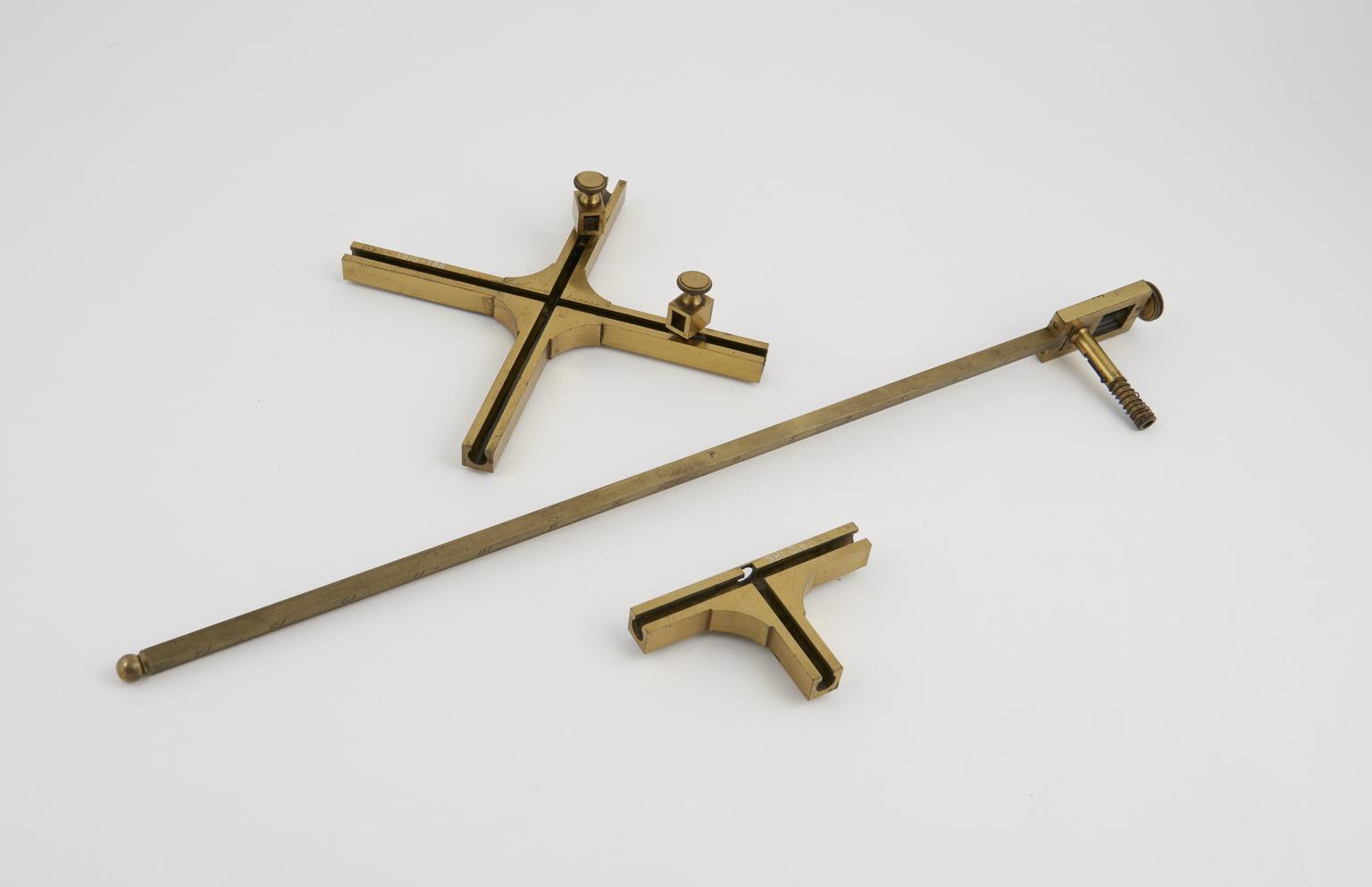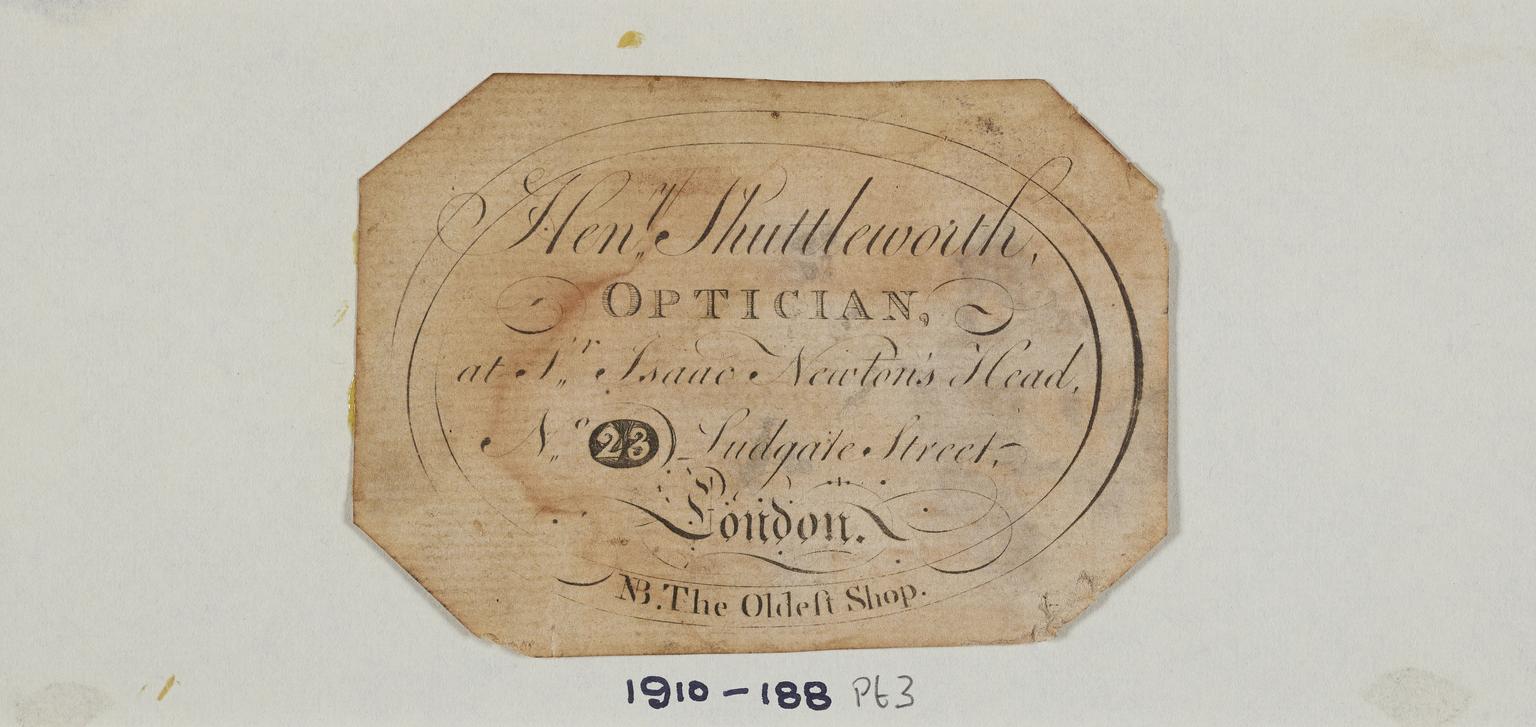
Case for elliptic trammels by Shuttleworth
Mahogany case for elliptic trammels by Shuttleworth London
- Materials:
- mahogany
- Object Number:
- 1910-188 Pt1
- type:
- instrument case
- Image ©
- The Board of Trustees of the Science Museum
Elliptic trammels by "Shuttleworth London" with extra bearing for smaller semi-ellipses in mahogany case.

Mahogany case for elliptic trammels by Shuttleworth London

Elliptic trammels by "Shuttleworth London" with extra bearing for smaller semi-ellipses
An elliptic trammel or ellipsograph is a mechanical device for drawing ellipses, as the name reveals.
Although these trammels' exact date and maker is unclear, the Shuttleworth brand was synonymous with some of the finest mathematical instruments during the mid-18th and early 19th centuries. Henry Raines Shuttleworth, who apprenticed to the famous London maker John Cuff, established his shop at Ludgate Street near St. Pauls in 1756 succeeded by his son Henry Shuttleworth in 1797 who apprenticed to his father.
Early versions of elliptic trammels go back to 1600s. In its simplest from, also known as trammel of Archimedes, it has two bars at right angles and in these bars are blocks to which a rod is adjustably fixed. The outer end of the rod holds the tracing point and as the blocks are made to slide, an ellipse is traced to the point.
An ellipse is one of the four conic sections (the four curves that are got from slicing a cone at different angles) the others being the circle, the parabola, and the hyperbola. Those shapes are important in understanding real life phenomena such as falling objects under gravity’s influence, which move along parabolas, and planetary orbits, which are ellipses and hyperbolas. They are also needed in several applications, for example, for bridges and arches in engineering and architecture.

Trade card: Henry Shuttleworth, at Dr Isaac Newton's Head No.23 Ludgegate St., London from case for elliptic trammels